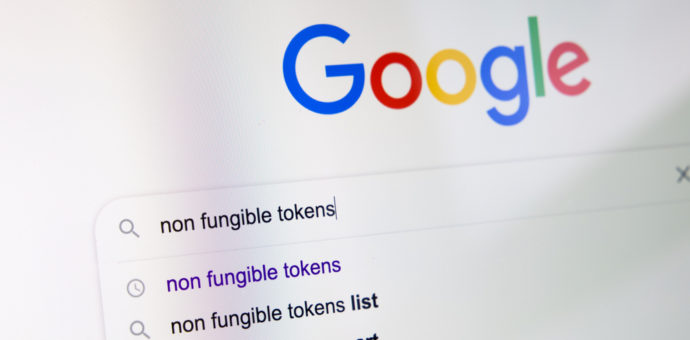Not only was the term one of the most searched for by Google in 2021, the word ‘NFTs’ (which is not a word, but an acronym for non-fungible tokens), was one of the most searched for, according to the Collins Dictionary, which highlights its meteoric growth (of 11,000%) in the last year.
The search for NFT has even surpassed the amount of searches for “crypto” and metaverse. The interest in the concept undoubtedly comes from the new ways non-fungible tokens can be used (and also significantly increased in value).
What is NFT, and why has the term sparked so much interest?
Collins’ definition for NFT is “a unique digital certificate, registered on the blockchain, that is used to secure ownership of an asset such as a work of art or a collectible”.
There are two types of tokens, to better understand it: fungible and non-fungible tokens. A fungible token has the same value as its peers, it can be exchanged for another, with no loss or profit in that transaction. The major cryptoasset such as bitcoin, Ether, or Solana fall in this category.
A non-fungible asset, on the other hand, is unique, being the digital representation of a non-replicable item, which ensures that the owner has something unique. This is why NFTs have been widely used to market art, whose works can even be copied, but the ownership and authenticity of the original is guaranteed by a unique record, which uses blockchain.
To illustrate, imagine one of the most famous works of art, the Mona Lisa, displayed in the Louvre in Paris. Anyone can buy an engraving at the exit of the museum or even in any shop worldwide and print the image in their own home. But the original cannot be purchased.
The logic is the same, and, as a result, NFTs have been used by artists (musicians and audiovisual producers), who sell exclusive works, but also in other segments, such as games. Furthermore, with the growth of the play-to-earn game’s trend, it is increasingly important that the gamer has a record of ownership of the game tokens (which can be characters, items, rewards, etc.). In this case, the tokens even become a source of income for the users.
What are the main use cases of NFTs in 2021?
Throughout the year, several NFT items were auctioned for huge sums of money, including the first post made on Twitter, various memes (which even sparked the discussion about whether memes are art) and a digital collage by artist Beeple, which cost US$ 69.3 million, and even social and environmental causes.
There is no shortage of examples, which shows that blockchain and the guarantee of the authenticity of NFTs are increasingly sparking people’s interest and proving to be an efficient alternative to the use of conventional channels to guarantee the authenticity and exclusivity of a good. It seems that creativity will be the limit for the use of NFTs.







